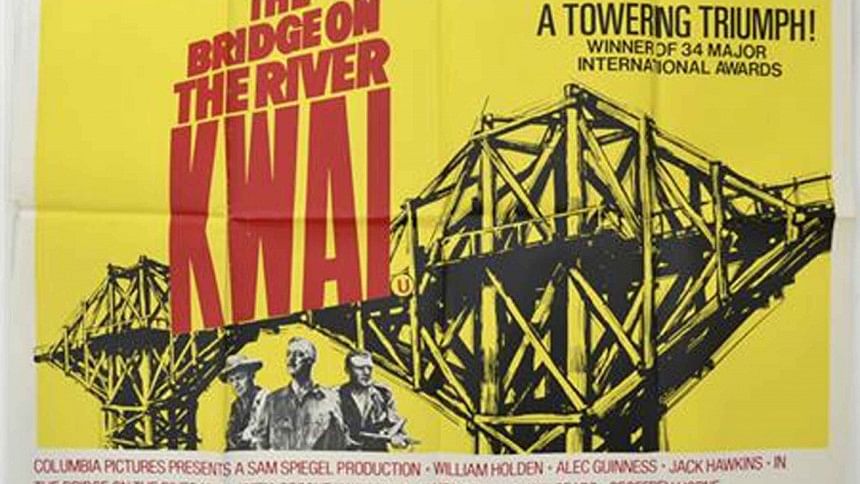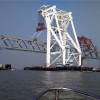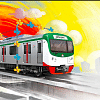The Bridge on the River Padma

Our senior citizens with a taste for Hollywood and British classic films will perhaps remember where I have taken the title from. They must have watched the film titled, "The Bridge on the River Kwai" in their youth – a 1952 epic war film directed by David Lean based on the novel by Pierre Boulle. The movie is no doubt a classic of superior quality which depicts how the Prisoners of War (PoW) from the allied troops captured by the Japanese during World War II were forced to construct a railway bridge with big wooden logs to connect Thailand with Burma over the river named Kwai.
The Japanese intention was to extend the reach of their troops to the heartland of Burma and beyond, right up to the eastern border of India. The extreme harsh conditions in the hot and humid jungle coupled with the unabated torture inflicted by the Japanese soldiers on the already famished PoWs made the task more difficult. Despite all the adversities, deaths and deprivation and untold cruelty, the captive soldiers and officers finally built the bridge which became a thing of beauty. It stood on the river Kwai to glorify the ingenuity of the soldiers and officers from the engineering divisions and other units of the US and British army and air force. They showed the enemy that when united for a good cause, even starving people can achieve wonders in a harsh situation. The film that won many Oscars and other international awards remains even today an iconic one worth watching many times over.
The construction of the Padma Bridge seemed like a many times magnified version of the construction process of the Bridge Kwai. The reel bridge used wooden logs, nails and coir ropes as essential components to build the main structure, but in the real bridge on the river Padma, concrete, steel and iron rods were used. A good number of colossal cranes, lifts and many other modern equipment were needed to build the bridge on the mighty river Padma. But, in the film, there were no cranes or lifts or generators in that gloomy, rain drenched jungle of Thailand, rather the physical strength and bare hands of the prisoners were the only tools available to push, pull and lift heavy logs.
But the pride felt by the engineers, soldiers, and workers in both the cases is just as self-glorifying and profound. Even after creating something for the enemy, the allied officers and soldiers looked at the wooden bridge with great pride. And when one builds something as massive and beautiful as the Padma Bridge, it is only natural that everyone associated with it should feel proud. It was no doubt a big challenge for the government to undertake the enormous work having no previous experience of handling such a big project. But it took up the challenge and started the work. No amount of negative remarks could dampen the spirit of the people associated with the task, and they kept doing what they were assigned to do with dogged determination. As the bridge began to take shape, those opposing it began to retreat into the shades one by one. Many looked at it with their narrow partisan eyes, never realising, or wanting to realise, that it was a national property that belonged to the country.
Here are some features of the Padma Bridge: "Padma Multipurpose Bridge is considered the most challenging construction project in the history of Bangladesh. The two-level steel truss bridge carries a four-lane highway on the upper level and a single-track railway on a lower level. The bridge's length is 20,180 feet. It is the longest bridge in Bangladesh, and is the longest over the Ganges in terms of both span and the total length. The highest depth of pile of this bridge is 122 metres, which is highest among all other bridges."
Well, a bridge like that is not something you build every other day, so it would be looked at and admired by many generations of Bangladeshis. They would also take pride knowing that it was built by their own engineers and that all the raw materials used in it were manufactured by Bangladeshi companies. And that the huge sums of money invested in it have been generated by the Bangladesh government from its own coffer.
The senior citizens have not been able to witness the construction work of some iconic railway structures like the longest railway bridge named the Hardinge Bridge on the Padma River in 1910. But they can now feel content to have been able to witness the construction work of one of the largest bridges in Southeast Asia.
It is always easy to have something – but it is difficult to keep. We have the Padma Bridge now, but the responsibility to maintain it properly rests on us.
Shahnoor Wahid is a senior journalist.

 For all latest news, follow The Daily Star's Google News channel.
For all latest news, follow The Daily Star's Google News channel. 








Comments